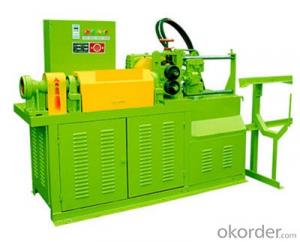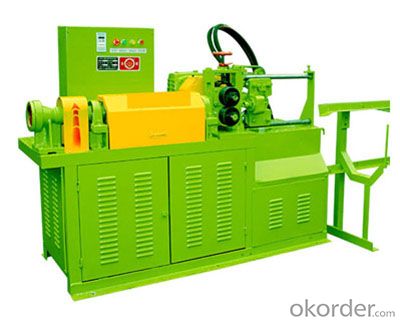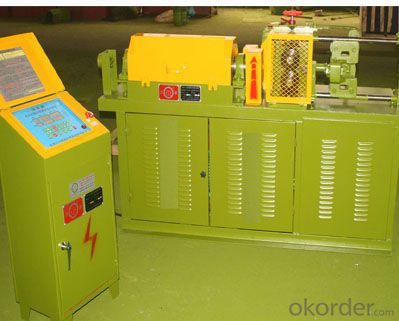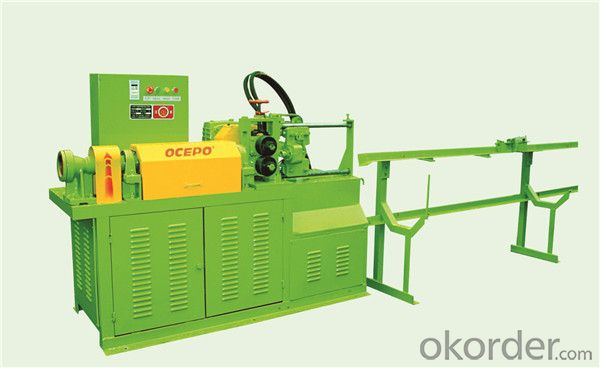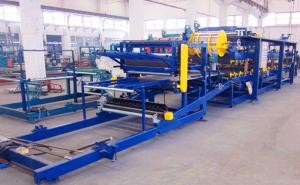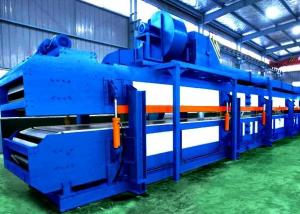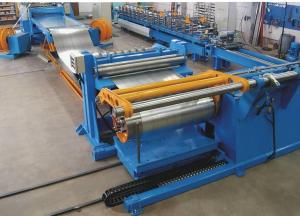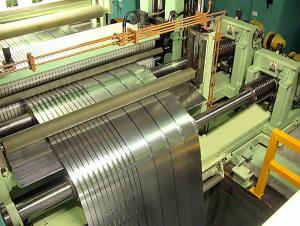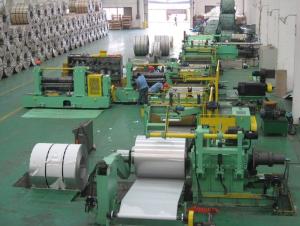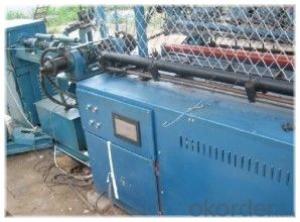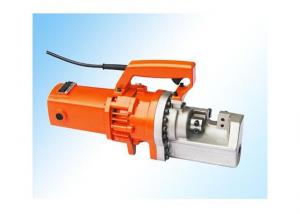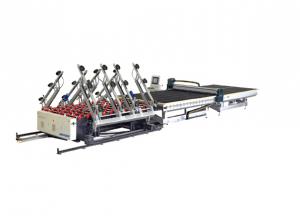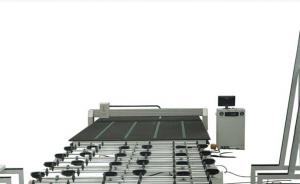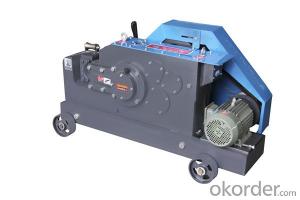Hydraulic Rebar Straightening and Cutting Machine YGT6-12
- Loading Port:
- Tianjin
- Payment Terms:
- TT OR LC
- Min Order Qty:
- 1 unit
- Supply Capability:
- 200 unit/month
OKorder Service Pledge
OKorder Financial Service
You Might Also Like
Hydraulic Rebar Straightening and Cutting Machine YGT6-12
Specification
Straightening Round Bar Dia.
Φ4-Φ12mm
Auto Cutting Length
700-8000mm
Error of Auto Cutting Length
±10mm
Straightening Speed
45m/min
Electromotor for Straightening
Model
Y132S-4
Rated power
5.5Kw
Electromotor for Cutting
Model
Y100L2-4
Rated Power
3.0Kw
Electromotor for pulling
Model
Y100L2-4
Rated Power
3.0Kw
Dimension
1900*600*1400mm
Application
The machine is used to straighten and cut round bar (steel rod).
Advantage
1. Smart size and space saving
2. Easy to operate, with fast speed
3. Low material loss
4. Economic
5. Hydraulic cutting, have low noise
Packing
Plywood Case
Payment
T/T L/C
Delivery
Within one week
Origin
China
Minimum Order
1 set
Packaging
Plywood case
Remarks
OEM & ODM, Buyer Label can be provided.
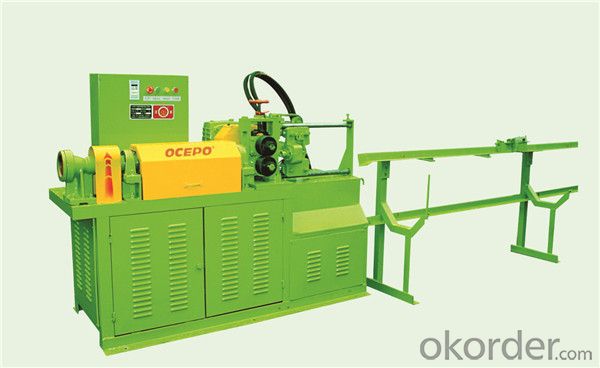
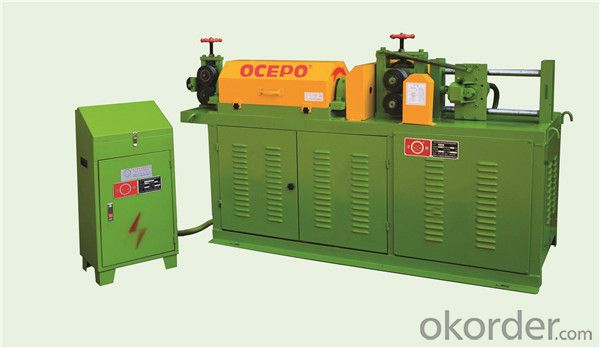
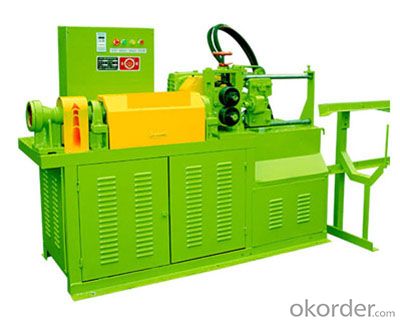
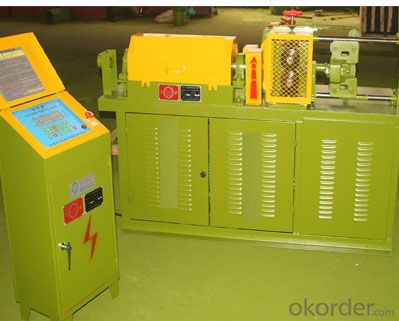
Company Direction
We are China professional manufacturer and system solutions provider of rebar connection machines,rebar processing machines and small road machines.
Founded in the 1990s. For 20 years, it has been focusing on the research, production and sales of rebar connection machines and rebar processing machines. The company is located in the capital of China - Beijing, has strong technical force, complete processing equipment and testing means. All the products are optimized by microcomputer design to reach the advanced level of industry.
- Q: Can metal straightening machinery be used for salvaging damaged metal parts?
- Salvaging damaged metal parts is possible with the use of metal straightening machinery. This machinery is specifically designed to reshape and repair metal components that have been deformed or damaged. By applying precise pressure and force, it is able to effectively straighten bent or twisted metal parts, restoring them to their original shape and functionality. From bent steel beams to dented car panels, metal straightening machinery can be utilized to salvage damaged metal parts, eliminating the need for expensive replacements. However, it is crucial to recognize that the success of this method depends on the severity and type of damage. In some cases, additional repair techniques or even replacement may be necessary.
- Q: What are the speed adjustment options available in metal straightening machinery?
- Metal straightening machinery typically provides a range of speed adjustment options to accommodate different materials and desired straightening outcomes. Some common options include: 1. Variable speed control: Many machines have a knob or digital display that allows operators to adjust the speed within a specific range. This flexibility ensures that the speed can be matched to the specific requirements of the metal being straightened. 2. Forward and reverse speed: Some machines can adjust the speed in both forward and reverse directions. This is particularly useful when dealing with complex metal shapes or when a specific straightening pattern is needed. 3. Incremental speed adjustment: Certain machinery allows for precise incremental speed adjustments. This option is beneficial when working with delicate or sensitive materials that require a gradual increase or decrease in speed to prevent damage or deformation. 4. Pre-set speed programs: Advanced machinery may offer pre-set speed programs designed for different types of metals or straightening tasks. These programs are often based on industry standards or specific techniques and can save time and effort by automatically setting the appropriate speed. 5. Speed feedback systems: Some machines are equipped with speed feedback systems that continuously monitor and adjust the speed based on real-time feedback from sensors. These systems ensure consistent and accurate speed control, which is crucial for achieving precise straightening results. It is important to note that the availability of speed adjustment options can vary depending on the specific model and manufacturer of the machinery. Therefore, consulting the machine's user manual or contacting the manufacturer directly is recommended to determine the precise speed adjustment options available for a particular machine.
- Q: Can metal straightening machinery be used for thin sheets or foils?
- Thin sheets or foils can indeed be straightened using metal straightening machinery. This type of machinery is specifically designed to eliminate any distortions or flaws in metal sheets, regardless of their thickness. Typically, this machinery is equipped with rollers or press plates that apply pressure to the metal, enabling it to be straightened and flattened. The same principles and techniques can be employed for thin sheets or foils, guaranteeing that they are straightened according to the desired specifications. However, it's worth noting that adjustments and modifications may be necessary for the machinery to accommodate the unique characteristics of thin sheets or foils, such as their fragility or flexibility.
- Q: Can metal straightening machinery be used on metal bars or rods?
- Yes, metal straightening machinery can be used on metal bars or rods. Metal straightening machinery is specifically designed to straighten and align metal bars or rods. It uses various techniques such as hydraulic pressure, heat, or a combination of both to reshape and remove any bends or deformities in the metal. This machinery is commonly used in industries such as construction, manufacturing, and automotive to ensure that metal bars or rods meet the required specifications and standards.
- Q: What are the different methods of aligning metal parts using this machinery?
- Machinery offers various methods for aligning metal parts, depending on the equipment and application. Some commonly used techniques include: 1. Mechanical alignment: By utilizing clamps, jigs, or fixtures, mechanical alignment holds metal parts securely in place, ensuring precise alignment throughout the assembly process. 2. Optical alignment: Employing camera or laser sensors, optical alignment systems detect the position and orientation of metal parts, offering real-time feedback to guide accurate alignment. 3. Precision measurement: Tools like calipers, micrometers, or laser measurement systems measure the dimensions of metal parts, guaranteeing correct alignment, especially for parts with tight tolerances. 4. Computer numerical control (CNC): CNC machines use computer programming to control the movement and alignment of metal parts. The program specifies the desired position and orientation, and the machine automatically adjusts the parts accordingly. 5. Welding fixtures: When aligning metal parts for welding, fixtures play a crucial role by securely holding the parts in place during the welding process. This ensures precise alignment and prevents distortion. 6. Pneumatic or hydraulic alignment: In certain cases, pneumatic or hydraulic systems can align metal parts. These systems utilize air or fluid pressure to apply force and adjust the position of the parts until they are aligned correctly. Ultimately, the choice of alignment method depends on factors such as part complexity, required precision, production volume, and available equipment.
- Q: Can metal straightening machinery be customized for specific requirements?
- Yes, metal straightening machinery can be customized for specific requirements.
- Q: What are the common safety requirements for hydraulic systems in metal straightening machinery?
- The common safety requirements for hydraulic systems in metal straightening machinery include proper installation and maintenance of hydraulic components, regular inspection and testing of the system, implementation of safety guards and shields, proper training and certification of operators, and adherence to relevant safety standards and regulations. Additionally, it is crucial to have emergency stop buttons or switches, pressure relief valves, and proper labeling of hydraulic lines and components for easy identification and troubleshooting.
- Q: Can metal straightening machinery be used for both small and large-scale productions?
- Metal straightening machinery is capable of being used for both small and large-scale productions. These machines are specifically designed to straighten and shape metal sheets, bars, tubes, or wires into the desired form. They have the ability to handle different sizes and thicknesses of metal materials, making them suitable for a range of production scales. For small-scale productions, metal straightening machinery offers a cost-effective solution due to their compact size and easy integration into limited workspaces. They efficiently handle smaller volumes of materials, ensuring consistent quality and precision in the final product. In contrast, metal straightening machinery can also handle large-scale productions. They are equipped with high-speed mechanisms, advanced automation features, and larger capacities to efficiently process a greater volume of metal materials. This makes them suitable for industries with high production demands, such as automotive, aerospace, construction, and manufacturing. Furthermore, modern metal straightening machinery is often equipped with adjustable settings and customizable features, allowing operators to adapt the machine to different production requirements. This flexibility enables the same machine to be used for both small and large-scale productions, maximizing its utilization and reducing the need for multiple machines. In conclusion, metal straightening machinery is versatile enough to meet the needs of both small and large-scale productions. They offer flexibility, efficiency, and cost-effectiveness for various industries.
- Q: What are the different straightening techniques used for different types of metal surface treatments and coatings?
- There are several different straightening techniques used for various types of metal surface treatments and coatings. The choice of technique depends on factors such as the type of metal, the extent of deformation, and the desired finish. One commonly used technique is mechanical straightening. This involves using specialized tools and machinery to apply pressure and manipulate the metal back into its original shape. Mechanical straightening is often used for metals that have undergone plastic deformation, such as bending or twisting. Thermal straightening is another technique that involves applying heat to the metal to induce plasticity and then manipulating it back into its original shape. This method is typically used for metals that have undergone severe deformation or have high levels of residual stress. Electrochemical straightening is a more specialized technique that is primarily used for metals that have undergone significant corrosion or have a high amount of surface defects. This technique involves using an electrolyte solution and applying an electric current to selectively dissolve the high points of the metal surface, resulting in a smoother and more even finish. In some cases, a combination of different techniques may be used to achieve the desired result. For example, a metal surface that has undergone plastic deformation and has residual stress may require a combination of mechanical and thermal straightening to fully restore its shape and integrity. Overall, the choice of straightening technique depends on the specific requirements of the metal surface treatment or coating, as well as the expertise and equipment available. It is essential to carefully evaluate the condition of the metal and consult with professionals to determine the most appropriate technique for achieving the desired outcome.
- Q: Can metal straightening machinery be used for large-scale production?
- Yes, metal straightening machinery can be used for large-scale production. These machines are designed to straighten metal parts efficiently and accurately, making them suitable for mass production processes. With their high-speed capabilities, advanced automation features, and ability to handle various types and sizes of metal components, metal straightening machinery can significantly increase productivity and ensure consistent quality in large-scale manufacturing operations.
Send your message to us
Hydraulic Rebar Straightening and Cutting Machine YGT6-12
- Loading Port:
- Tianjin
- Payment Terms:
- TT OR LC
- Min Order Qty:
- 1 unit
- Supply Capability:
- 200 unit/month
OKorder Service Pledge
OKorder Financial Service
Similar products
Hot Searches
